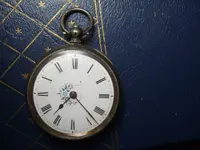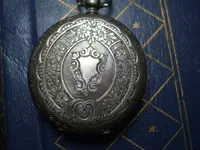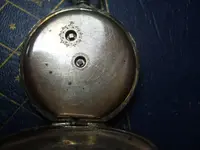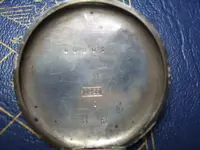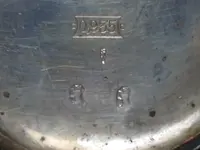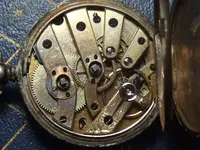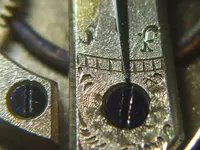That’s a Swiss hallmark used for export silver, and almost exclusively for watch cases exported to Britain between 1888-1907.
In 1887, Britain introduced new requirements for imported gold and silver watch cases via the “British Merchandise Act”. From 1st January 1888 imported cases had to be hallmarked in a British Assay Office, or in their country of origin, or carry no hallmarks at all (and therefore couldn’t be sold as “silver”). Neither of the existing Swiss silver standards (.800 or .875) met the Sterling standard and so the import of Swiss silver cases was effectively going to be prohibited by default.
At a meeting of the Swiss Federal Council on 24 December 1887, it was decreed that an additional new standard be introduced to allow compliance with British law. The new standard was “0,935 Sterling” and .935 was chosen rather than .925 as a result of differences in understanding about what tolerances applied to assay analysis in Britain versus Switzerland. To confirm that a watch case had assayed at .935 a distinguishing hallmark was needed and the Swiss decided on three bears, each within a shield… one small bear above two large ones. That’s your mark, I think.

In October 1890 it was proposed that the practice be discontinued and watch cases be marked 0,935 with a single bear. The Fédération Horlogère Suisse expressed concern on behalf of watch case makers that British customers had become sufficiently accustomed to seeing three bears that it would be unwise to abandon the mark and so both styles were then allowed. The number of bears didn’t matter for all markets and so watch cases of 0,935 silver that were submitted to the Bureaux de Contrôle (assay offices) were usually in packets marked “Destinée à l'Angleterre” (destined for England) to be stamped with three bears; everything else, including for America, was stamped with a single bear.
Further legislative changes meant that from 1st June 1907 all imported Swiss silver watch cases had to be assayed and hallmarked in a British assay office and so the three bears mark is generally not seen after that date unless a British hallmark is also present. Then in 1933, Switzerland introduced a 0,925 standard fully aligned to Sterling and accompanied by a duck hallmark.



